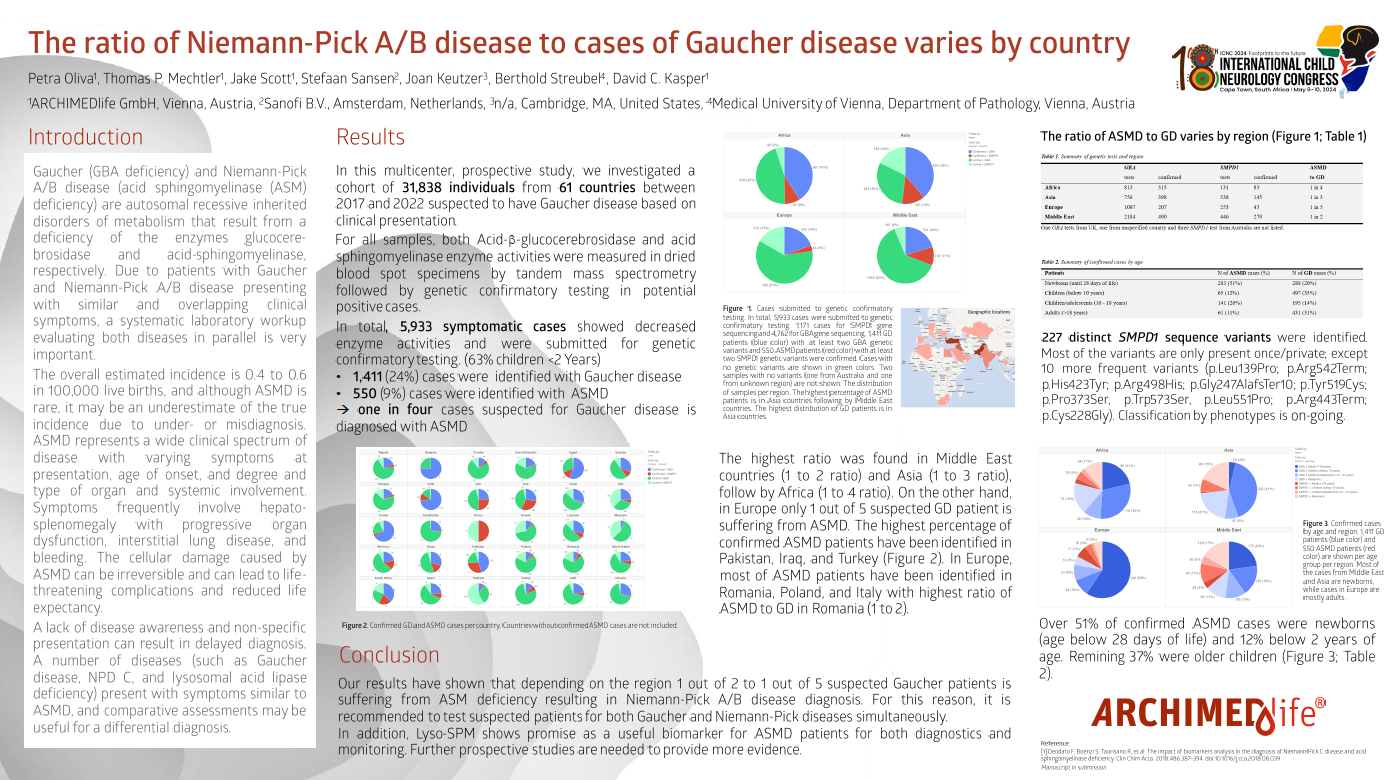The Ratio Of Niemann-Pick A/B Disease To Cases Of Gaucher Disease Varies By Country
Gaucher (GBA deficiency) and Niemann-Pick A/B disease (acid sphingomyelinase (ASM) deficiency)) are autosomal recessive inherited disorders of metabolism that result from a deficiency of the enzymes glucocerebrosidase and acid-sphingomyelinase, respectively. The symptoms of acid sphingomyelinase deficiency (ASMD) and Gaucher disease are similar. Thus, it is likely that patients with ASMD are referred for testing for Gaucher disease. In this prospective study, we studied the potential benefit of simultaneous testing for ASMD and Gaucher disease in patients referred for a diagnosis of Gaucher disease. Samples from over 25,000 individuals from over 60 countries were tested using a combined biochemical and genetic approach. For all samples, β-Glucocerebrosidase (GBA) and acid sphingomyelinase (ASM) enzyme activities, were measured simultaneously in dried blood spot specimens (DBS) by tandem mass spectrometry. The deficient enzyme was detected in over 5,500 DBS (approximately 82% were GBA-deficient and 18% were ASM-deficient). Genotype analysis of GBA or SMPD1 resulted in over 1,300 confirmed diagnoses of Gaucher disease and over 500 confirmed diagnoses of ASMD. The ratio of ASMD to Gaucher disease patients diagnosed varied by region and country. The highest ratios were seen in Middle Eastern countries (1 to 2) and Asia (1 to 3), followed by Africa (1 to 5) and Europe (1 to 6). Most of the ASMD patients were newborns and children under 10 years of age.
Petra Oliva
ARCHIMEDlife
Austria
Thomas P. Mechtler
ARCHIMEDlife
Austria
Jake Scott
ARCHIMEDlife
Austria
Stefaan Sansen
Sanofi Genzyme
Netherlands
Joan Keutzer
United States
Berthold Streubel
The Medical University of Vienna
Austria
David C. Kasper
ARCHIMEDlife
Austria

Marie Dantl
Austria